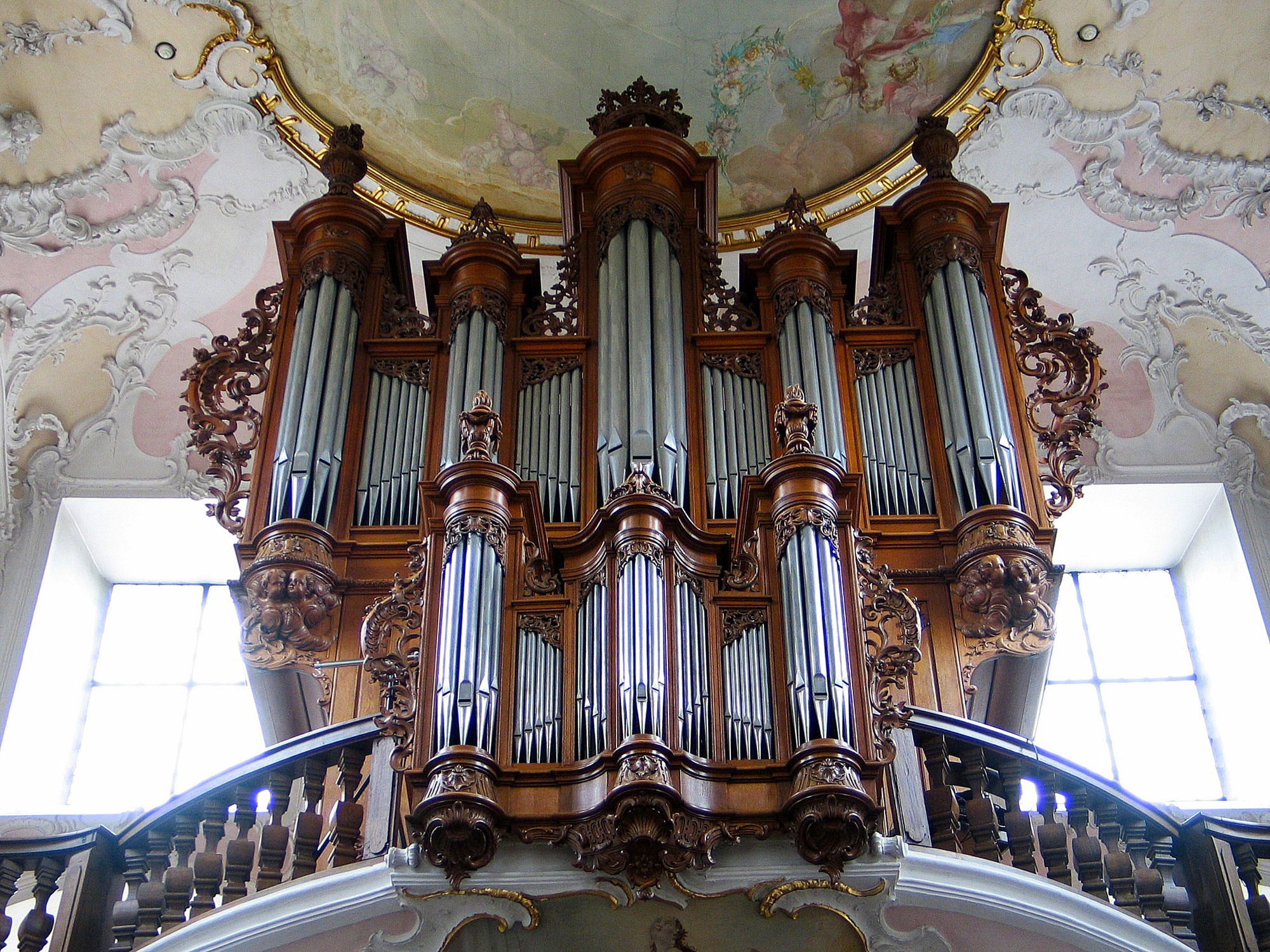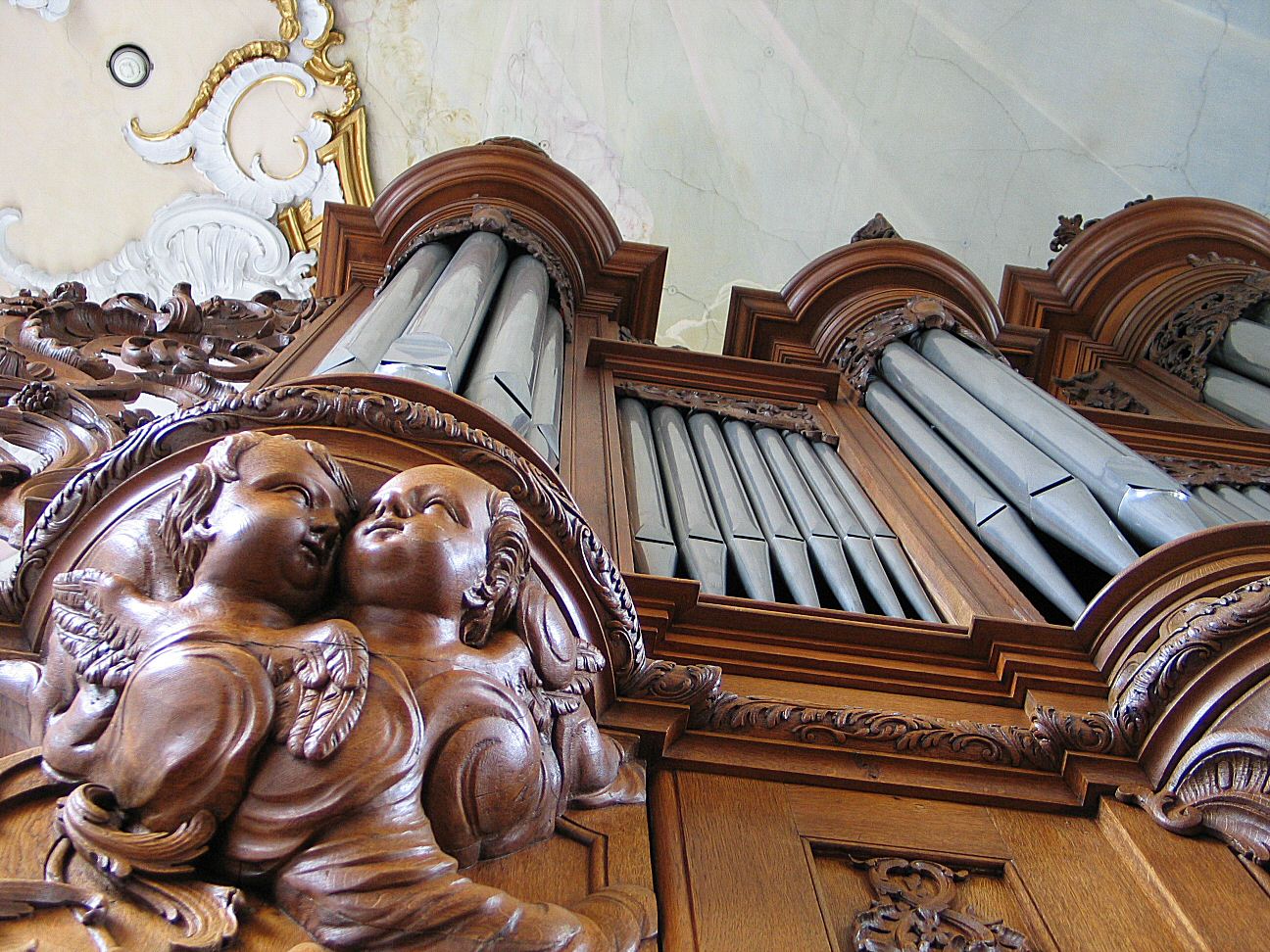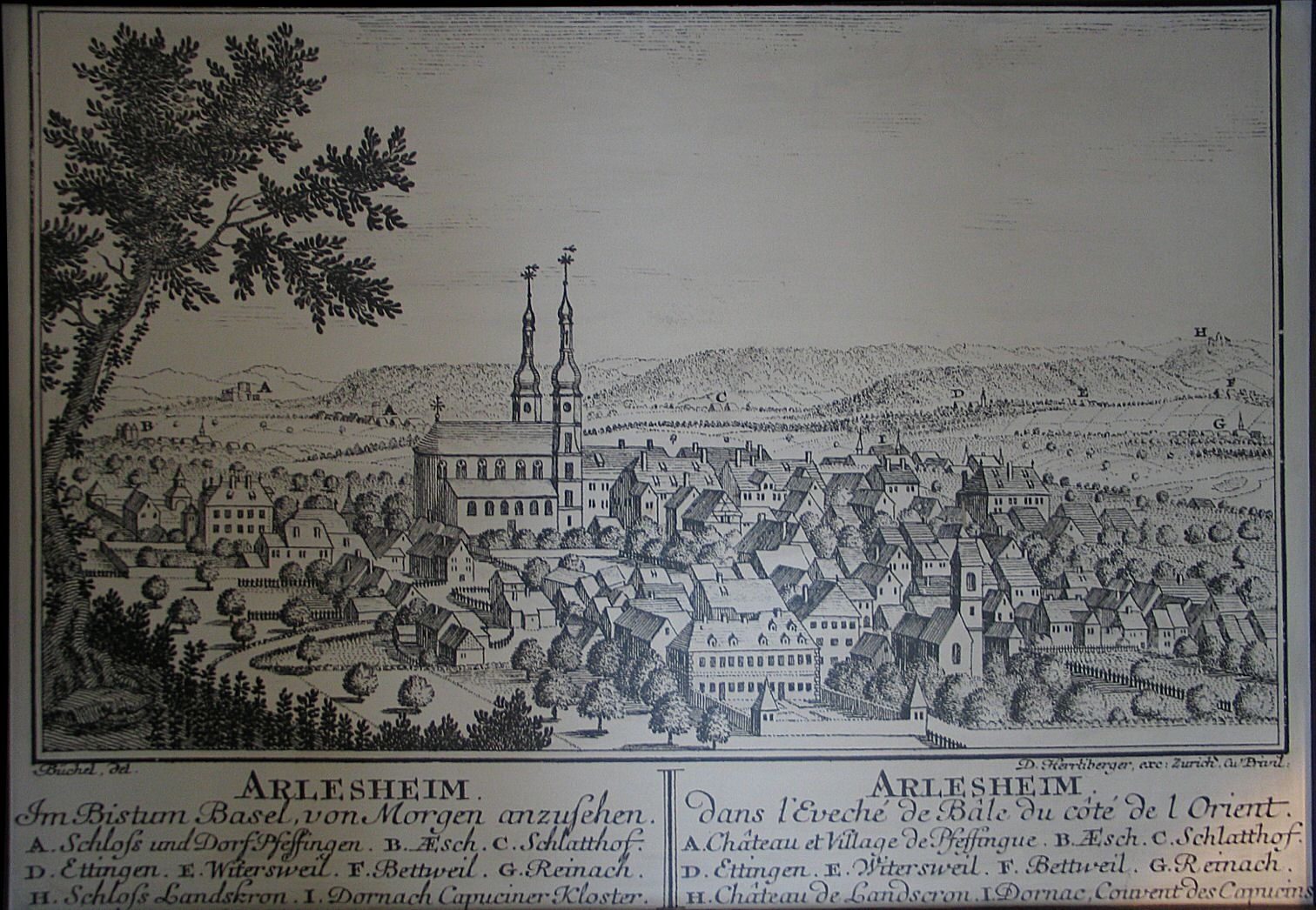Arlesheim, Dom
| Builder | J. A. Silbermann |
|---|---|
| Year | 1761 |
| Period/Style | Baroque |
| Stops | 35 |
| Keyboards | 3+P |
| Keyaction | tracker/mechanical |
| Tuning | Vallotti at 415 Hz |
| Sampleset |
Available
 , sampled by
OrganArt Media
, sampled by
OrganArt Media
|
The Johann-Andreas Silbermann/Metzler organ in the Cathedral of Arlesheim, Baselland, Switzerland, originally built in 1761, stands as a significant historical and musical artifact, being the only remaining Silbermann organ in Switzerland. This organ showcases a French disposition with 36 registers across three manuals (main organ, positive back, echo) and a pedal, demonstrating German influences with a fully developed 16-foot pedal base and registers such as Sifflet 1. Later enhancements by Silbermann included expanding the echo division across the full manual range, introducing a Bassoon bass 8 in the bass division and adding stops like Prestant, Nazard, and Doublette in the treble.
In the late 1950s to early '60s, the organ underwent a critical restoration and reconstruction by the Swiss firm Metzler, which also expanded the pedal work. Further refinements continued sporadically until 2005, ensuring the organ preserved its original tonal qualities while incorporating modern functionalities. Today, this organ is celebrated as one of Johann Andreas Silbermann's most important works, capable of authentically interpreting a vast repertoire from the Baroque through to the early Romantic period. The organ gained international fame, especially after Lionel Rogg recorded Bach's complete works in the 1970s, benefitting from the cathedral's excellent acoustics, which allow up to five seconds of reverberation, enhancing its rich and nuanced sounds.
In the late 1950s to early '60s, the organ underwent a critical restoration and reconstruction by the Swiss firm Metzler, which also expanded the pedal work. Further refinements continued sporadically until 2005, ensuring the organ preserved its original tonal qualities while incorporating modern functionalities. Today, this organ is celebrated as one of Johann Andreas Silbermann's most important works, capable of authentically interpreting a vast repertoire from the Baroque through to the early Romantic period. The organ gained international fame, especially after Lionel Rogg recorded Bach's complete works in the 1970s, benefitting from the cathedral's excellent acoustics, which allow up to five seconds of reverberation, enhancing its rich and nuanced sounds.
| Positif | Hauptwerk | Récit/Echo | Pedal |
|---|---|---|---|
| Bourdon 8 | Bourdon 16 | Bourdon 8 | Subbass 16 |
| Prestant 4 | Montre 8 | Prestant 4 | Octavbass 8 |
| Flûte 4 | Bourdon 8 | Nazard 2 2/3 | Quinte 5 1/3 |
| Nazard 2 2/3 | Prestant 4 | Doublette 2 | Prestant 4 |
| Doublette 2 | Nazard 2 2/3 | Tierce 1 3/5 | Fourniture 3fach |
| Tierce 1 3/5 | Doublette 2 | Basson/Trompette 8 | Bombarde 16 |
| Larigot 1 1/3 | Tierce 1 3/5 | Trompette 8 | |
| Fourniture 3fach | Sifflet 1 | Clairon 4 | |
| Cromorne 8 | Fourniture 3fach | ||
| Cymbale 2fach | |||
| Trompette 8 | |||
| Voix humaine 8 |
No Video/Audio samples available.
https://www.organartmedia.com/de/j-a-silbermann-metzler
 Pipe Organ Map
Pipe Organ Map



